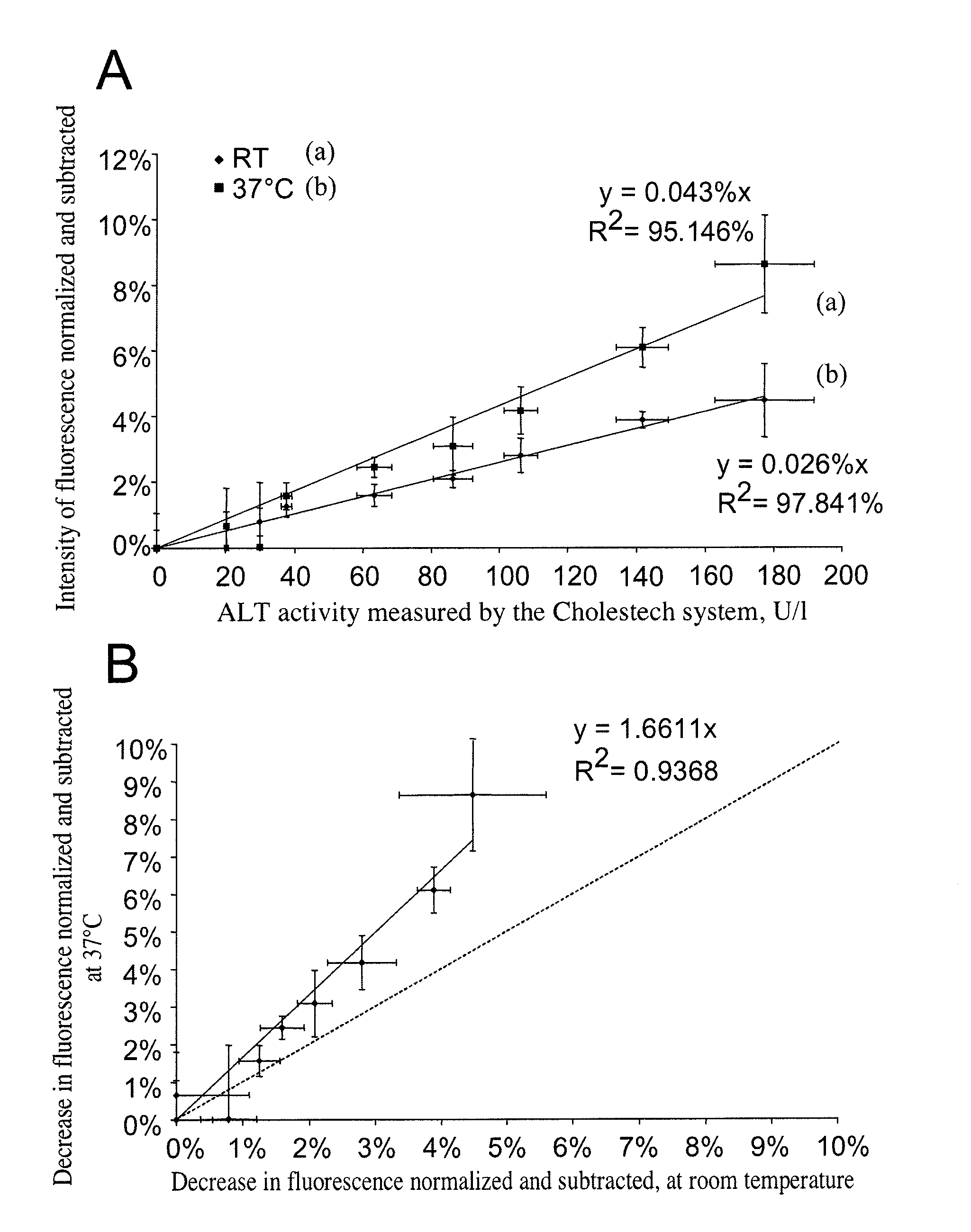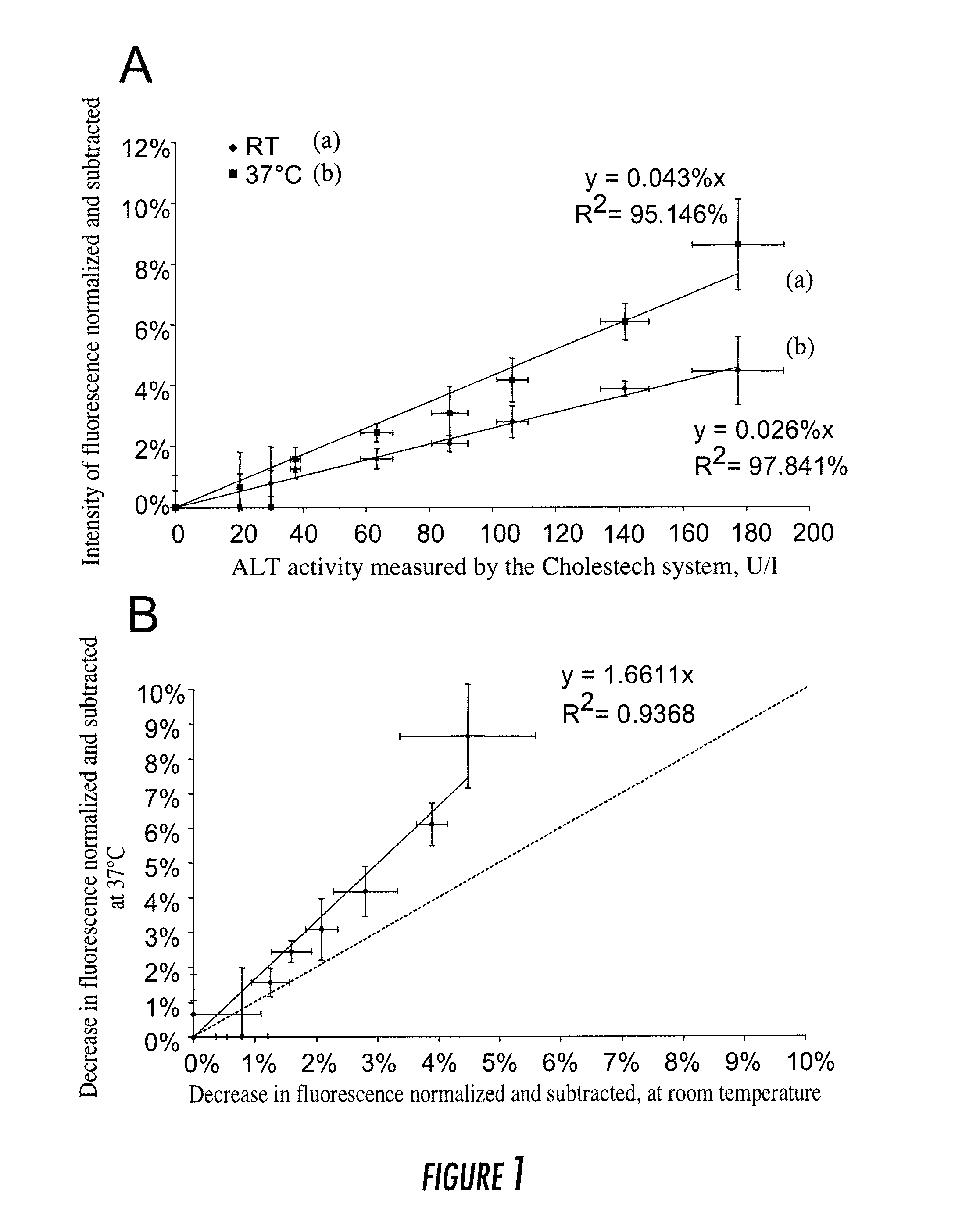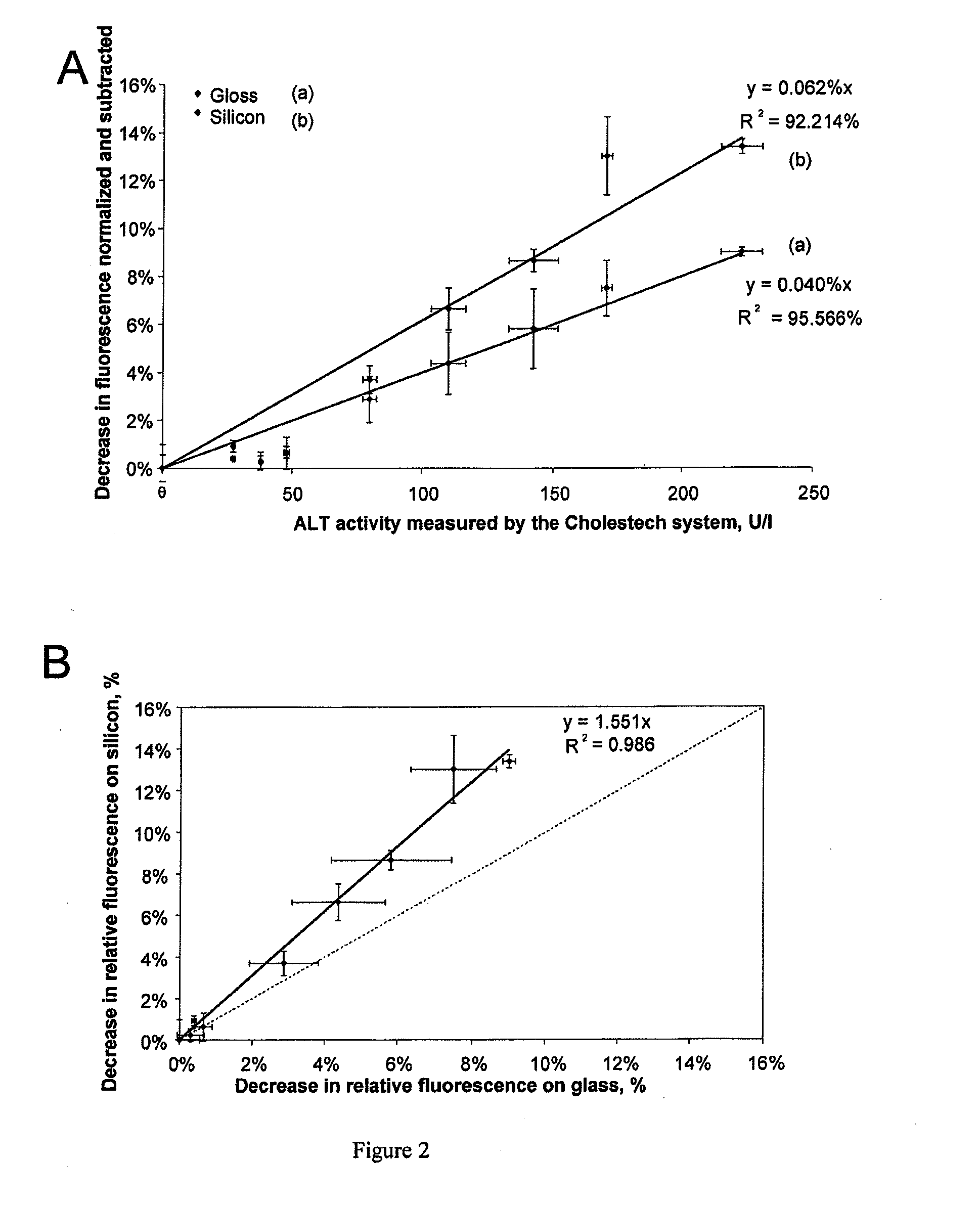Method for Assaying Plasma Enzymes in Whole Blood
a plasma enzyme and plasma enzyme technology, applied in biochemistry equipment, biochemistry equipment and processes, instruments, etc., can solve the problems of cuvette calibration and stoppage, and achieve the effect of reducing fluorescence, reducing fluorescence, and reducing fluorescen
- Summary
- Abstract
- Description
- Claims
- Application Information
AI Technical Summary
Benefits of technology
Problems solved by technology
Method used
Image
Examples
example 1
Assay of Transaminases by Measuring the Decrease in The Fluorescence of NADH in the Human Whole-Blood Sample: Study of Various Parameters Capable of Influencing the Reliability and Repeatability of the Measurements
[0067]1.1 Materials and methods
a) Reagents Used:
[0068]L-alanine (L-Ala): free of acid, BioUltra, ≧99.5% (NT), Fluka, Ref: 05129;[0069]L-aspartate (L-Asp): free of acid, BioUltra, ≧99.5% (T), Fluka, Ref: 11189;[0070]pyridoxal 5′-phosphate monohydrate (PLP): BioChemika, ≧97.0% (NT), Fluka, Ref: 82870;[0071]α-ketoglutarate: disodium salt dihydrate of α-ketoglutaric acid, purity≧98.5% (dry matter, NT), Fluka, Ref: 75892;[0072]lactate dehydrogenase (LDH): EC 1.1.1.27, obtained from pig skeletal muscle, in glycerol, homotetramer, Roche, Ref: 10 127 221 001;[0073]malate dehydrogenase (MDH): EC 1.1.1.37, obtained from pig heart, in glycerol, homodimer, Roche, Ref: 10 127 892 001;[0074]alanine aminotransferase (ALT): glutamate-pyruvate transaminase (GPT), obtained from pig heart, f...
example 2
Experimental Validation of the Method for Assaying Transaminases by Measuring the Fluorescence of NADH
[0113]The results presented in example 1 related to the assays carried out on blood samples obtained from healthy donors, which were supplemented with porcine transaminases in order to mimic the samples from sick patients, whose transaminase levels would be high. The method for assaying transaminases according to the present invention was then validated on whole-blood samples from sick patients collected over citrate.
[0114]Citrated blood samples obtained from patients hospitalized at the Hospices Civils de Lyons (HCL, France) were analyzed according to the method of the present invention. The measurements of the fluorescence of NADH were carried out according to the method described in example 1, with the following parameters:[0115]a temperature of 37° C.;[0116]microfluidic chambers with a silicon base;[0117]an NADH concentration of 180 μM for the assay of ALT and 90 μM for the assa...
PUM
 Login to View More
Login to View More Abstract
Description
Claims
Application Information
 Login to View More
Login to View More - R&D
- Intellectual Property
- Life Sciences
- Materials
- Tech Scout
- Unparalleled Data Quality
- Higher Quality Content
- 60% Fewer Hallucinations
Browse by: Latest US Patents, China's latest patents, Technical Efficacy Thesaurus, Application Domain, Technology Topic, Popular Technical Reports.
© 2025 PatSnap. All rights reserved.Legal|Privacy policy|Modern Slavery Act Transparency Statement|Sitemap|About US| Contact US: help@patsnap.com



